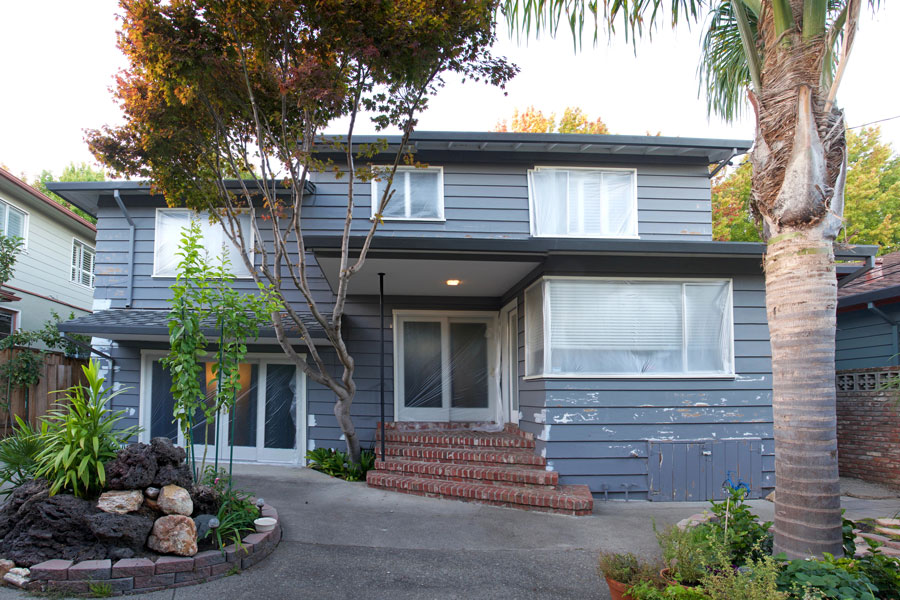Do I Need to Replace or Just Repair My Siding? Understanding Siding Repair vs. Replacement
Importance of Siding Maintenance
When faced with the dilemma of siding repair versus replacement, it’s essential to recognize that proper siding maintenance can significantly extend the lifespan of your home’s exterior. Regular inspections and upkeep can help you identify minor issues before they escalate into costly problems. For instance, a small crack can often be sealed quickly, preventing moisture infiltration that could lead to rot or mold.
As a homeowner, I’ve learned that dedicating time to siding maintenance pays off. A simple routine of cleaning and checking for damages after storms can make all the difference.
Factors to Consider
Deciding between repair and replacement involves evaluating several critical factors:
- Extent of Damage: Is it localized or widespread?
- Age of Siding: How much longer can the current material last?
- Cost Analysis: What are the financial implications of both options?
- Aesthetic Appeal: How important is the exterior look of your home?
Thoroughly analyzing these considerations will guide you toward the most beneficial choice for your home. Making an informed decision today can lead to a more durable and visually appealing exterior tomorrow.
Signs That Indicate Replacement is Necessary
Extensive Damage
As you assess your siding, it’s crucial to recognize the signs of extensive damage that often warrant a full replacement. If you notice prevalent issues in multiple areas rather than just one small spot, it might be time to consider saying goodbye to your current siding.
In my own experience, ignoring a few small signs eventually led to discovering larger foundational issues. Some red flags to keep an eye out for include:
- Cracking or Bubbles: If multiple sections show these signs, it’s a signal that moisture has invaded.
- Rotting or Warping: This suggests that the material is deteriorating due to water damage.
- Insect Infestations: If you find signs of pests, it’s a strong indicator that replacement is necessary.
Aging and Wear
Over time, even the best siding materials can show their age. If your siding is decades old, wear and tear become inevitable. For instance, I once encountered vinyl siding that had faded significantly and lost its protective qualities.
Consider these factors:
- Fading or Discoloration: Aesthetic issues often lead to a decline in the material’s functionality.
- Increased Energy Costs: If you notice your bills climbing without any changes in usage, old siding may not be insulating properly.
Recognizing these signs early on can save you time and money, allowing you to opt for a proactive approach to siding management.

When Repairing Is Sufficient
Minor Damage and Wear
Not every siding issue requires a complete overhaul. Sometimes, minor damage and wear can be easily addressed with straightforward repairs. I remember encountering a few small cracks in my cedar siding that were easily fixed with some caulk and paint. Just a little upkeep can extend the life of your exterior significantly.
Here are some indicators that repairs might suffice:
- Small Cracks or Holes: Often, a simple fill with caulk or patch material works wonders.
- Nail Pops: These can be hammered back in place without the need for replacement.
- Surface Mold or Mildew: A thorough cleaning can restore the exterior’s beauty.
Cost-Effective Solutions
Repairing rather than replacing can be a wise financial decision. While it’s tempting to opt for a shiny new exterior, consider these cost-effective solutions:
- Local Repairs: Targeting specific areas saves money compared to a full replacement.
- DIY Options: Engaging in basic repairs yourself can dramatically reduce labor costs.
- Preventive Maintenance: Regular upkeep mitigates the risk of extensive damage later.
By understanding when repairs are sufficient, you can maintain the integrity of your home while keeping your budget in check.
Costs Comparison: Repair vs. Replacement
Budget Considerations
When weighing the costs of siding repair versus replacement, budgeting is a fundamental component of your decision-making process. As someone who has navigated these financial waters, I learned firsthand how helpful it is to break down expenses to see what fits your financial situation.
Consider the following aspects:
- Initial Repair Costs: Often significantly lower than replacement, repairs might range from a few hundred to a couple thousand dollars, depending on the extent.
- Replacement Costs: A full siding replacement can run anywhere from $5,000 to $15,000 or more, depending on materials and labor.
- Hidden Fees: Remember to factor in permits, disposal costs, and potential unforeseen issues.
Long-Term Investment
While repairs may seem budget-friendly in the short term, it’s important to think about the long-term implications. For example, I once opted for superficial repairs, thinking they would save money, only to face repeating problems a year later.
- Durability: New siding typically lasts longer, providing enhanced protection against weather and pests.
- Energy Efficiency: Modern materials often lead to lower heating and cooling costs.
- Weighing short-term savings against long-term value is key. A thoughtful approach to budgeting can ensure you find the best solution for your home’s needs.
- Hiring Professionals vs. DIY Repair
Benefits of Professional Services
Deciding between hiring a professional and tackling siding repairs yourself is an important consideration. While it can be tempting to roll up your sleeves and dive into a DIY project, the benefits of professional services often outweigh the urge to go solo.
From my own experience, hiring experts ensured that the job was done right the first time. Here are some key advantages of opting for professional services:
- Expertise: Professionals have specialized knowledge and skills that can identify underlying issues you might miss.
- Quality Assurance: With industry-standard techniques and materials, you can trust that the repairs will last longer.
- Safety: Working at heights or dealing with heavy materials can be hazardous; professionals are trained to handle such risks safely.
DIY Considerations
On the flip side, DIY repairs can be an appealing option for those looking to save money and gain hands-on experience. Take it from me; there’s something rewarding about fixing things yourself!
Here are some considerations if you choose the DIY path:
- Cost Savings: You can eliminate labor costs, making repairs more budget-friendly.
- Flexibility: You control your schedule, allowing you to work at your own pace.
- Skill Development: Tackling repairs can build your skills and confidence for future projects.
Ultimately, understanding the pros and cons of each approach will help you make an informed decision that suits your needs and capabilities.
Environmental Impact: Repairing vs. Replacing
Sustainable Practices
As we continue to weigh the options of repairing versus replacing siding, it’s essential to consider the environmental impact of our choices. From my perspective, maintaining a sustainable home not only enhances its value but also promotes a healthier planet.
When you opt to repair rather than replace, you contribute to sustainable practices in several key ways:
- Waste Reduction: Repairing siding means fewer materials end up in landfills, which is a significant benefit for the environment.
- Resource Conservation: By utilizing existing siding, you reduce the demand for new materials, which often require extensive energy and resources to produce.
Eco-Friendly Options
If you decide that a replacement is necessary, consider eco-friendly options that have minimal environmental impacts. I’ve had great success finding sustainable alternatives that not only look great but also offer longevity. Some options include:
- Recycled Materials: Siding made from recycled content helps reduce waste and diminishes the need for virgin resources.
- Sustainable Wood: Choosing wood sourced from sustainably managed forests can minimize deforestation.
- Low-VOC Paints: If you’re refreshing the look of existing siding, using low-VOC paints ensures better indoor air quality.
By making conscious choices in your siding decisions, you can positively impact the environment while also beautifying your home.
Making the Decision: Repair or Replace
Decision-Making Factors
Choosing whether to repair or replace your siding can feel overwhelming, but breaking it down into key decision-making factors can simplify the process. I’ve stood at this crossroads, and reflecting on these factors significantly aided my decision.
Consider the following:
- Extent of Damage: Evaluate how widespread the issues are. A few minor cracks may lead you toward repair, while extensive damage could necessitate replacement.
- Budget Availability: Determine your financial readiness. Repairs often require less upfront investment, while replacements represent a longer-term expense.
- Timeframe: If you’re in a hurry to improve curb appeal, repairing might be quicker than a full replacement that involves permits and contractor schedules.
Finding the Right Solution
Once you’ve assessed the decision-making factors, focus on finding the right solution tailored to your needs.
- Research Alternatives: Explore various repair techniques and siding materials available for replacement to ensure you’re informed.
- Consult Professionals: If unsure, seeking advice from siding experts can provide valuable insights and help clarify your options.
- Trust Your Instincts: Ultimately, trust your gut feeling—whether it leans toward a repair or full replacement, your home should reflect your values and vision.
By taking a systematic approach, you can confidently navigate the repair or replace dilemma and find the best solution for your home.
Conclusion
Summary of Recommendations
Navigating the decision between siding repair and replacement doesn’t have to be daunting. After exploring the various facets of this dilemma, here’s a summary of key recommendations based on my own experiences and insights gleaned along the way:
- Prioritize Regular Maintenance: Regularly inspect your siding to catch minor damages early, saving you from costly repairs down the line.
- Evaluate Damage Extent: Assess whether your siding issues are localized or widespread to determine if repairs are sufficient.
- Budget Mindfully: Plan your budget, keeping long-term investments in mind. Option for solutions that balance immediate costs with future savings.
- Consider Environmental Impact: Factor in the sustainability of your decisions, opting for eco-friendly materials and practices when possible.
Final Considerations
Ultimately, the choice between repair and replacement hinges on your unique situation.
- Trust Your Instincts: Listen to your intuition about what feels right for your home.
- Seek Expert Advice: Don’t hesitate to consult professionals for insights tailored to your specific needs.
- Invest in Your Home’s Future: Remember, your home is an investment; making informed siding decisions helps ensure it remains beautiful and functional for years to come.
By weighing these recommendations, you can confidently make a choice that enhances your home’s value and extends its life.






